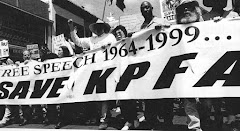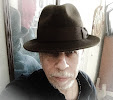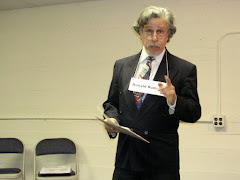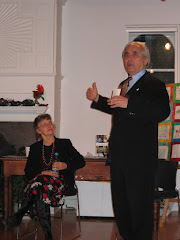This is the twelfth chapter of a
series excerpted from “Maverick Chronicles,” a memoir-in-progress. Previous stories can be
found at VTDigger. By Greg Guma
The interpreter warned us about getting into East Berlin. "They'll
probably hold you an hour,” he predicted. “Normally, it would be a half hour but
they're in a bad mood because of Brezhnev."
The Soviet leader had died two days before and bleak predictions
circulated about how the shock, along with West German Chancellor Helmut
Schmidt's fall from power earlier in the year, would affect East-West
relations. None of this changed our minds. A peace meeting would be starting at
an obscure church on the other side of the Berlin Wall in a little more than an
hour. We didn't have the exact address and knew only a few German phrases. But
the journey was worth the risk.
Harro, the lanky blonde interpreter who was squiring us around, gently
discouraged the idea. The East Germans would scalp us each for 25 marks, force
us to exchange them at par for Eastern marks worth only a quarter as much. Once
we returned the money would be worthless. And if we didn't make it back across
the border by midnight, we could be thrown in jail.
Quite a way to spend our second night in in the country.
 |
| West Berlin squatters reclaimed abandoned buildings. |
In November 1982, at the height of the Reagan era, in what felt like Cold War II, Robin Lloyd and I joined a delegation organized by The Nation. Despite a prediction by Sid Lens, one fellow traveler and senior editor of The Progressive at the time, that we would never even find our destination, crossing east seemed better than watching a transvestite nightclub act. That was the entertainment choice offered by our hotel. We set out for the train carrying only some money, passports, a map and a phrase book.
An East German journalist had brought up the meeting earlier that day.
"You can only see the peace movement when people assemble," he
explained. The meeting was one of about 2,000 being held during a ten-day
period called the annual "Peace Decade." All the events were being held
in churches, institutions that had become the motor for a new movement.
In response to a renewed militarization of daily life, thousands of
East Germans were gathering. Some had signed the Berliner Appeal, a letter
calling for an end to military training and a peace curriculum in the schools.
Others wore pacifist armbands -- even after they were banned by the state and
replaced with government-circulated anti-NATO emblems.
The East German government showed open disdain for the pacifist drift
of the activities, according to the journalist who gave us the tip. "In
the GDR," he said, "the official meaning of peace is 'peace must be
armed'." Yet after the 1979 NATO decision to deploy more than 100 Pershing
missiles in West Germany, both East and West Germans saw the threat.
"People felt that war was a real possibility," explained the
writer. And so, reaction in the East grew within the only autonomous
organizations in the country – churches.
With the border minutes away I reviewed what I’d heard over the last 24
hours. West Berliners were worried about the "tough words from the White
House," Alex Langolios said. Alex was deputy speaker of the Berlin
Parliament and a Social Democrat. "We're nervous when we hear about
winning a nuclear war."
He talked up East-West cooperation, a guarded interdependence in
relation to trade, and the need to fight fear on both sides of the Wall. This
Social Democrat sounded very much like an American Democrat. Echoing their
warnings about the Reagan agenda, he suggested that relations could deteriorate
further with the Christian Democrats taking the reins.
In West Berlin, the Christian Democratic Party had been in control
since the recent local elections. Here and elsewhere, the attraction of Social
Democratic liberalism had faded with the failure of Germany's "economic
miracle." The economy had stopped growing, national unemployment was over
two million, and the government was resorting to debt financing. In Berlin,
unemployment was over 8 percent, and up to 15 percent among the young. There
were over 10,000 vacant apartments in the city, a result of both speculation
and years of neglect. Yet 50,000 people were looking for homes.
In recent years, the city's population had dropped by about 300,000 to
1.9 million, despite aggressive attempts to lure new industry, subsidies from
the national government, and even a legal loophole that allowed young people to
defer military service as long as they lived in West Berlin. On the other hand,
what had grown was the number of squatters and Turkish guest workers, the
latter exacerbating the unemployment situation.
"Berliners think this city is the center of the
world," Langolios confided. Still, he had to admit that social stress was
bringing the viability of the center into question.
The story was similar across the country. After 15 years with Social
Democrats in charge, the consensus had cracked. Economic stagnation, combined
with the cumulative strain of being a front line state in the struggle between
East and West, became too much for Chancellor Schmidt. In late September, his
coalition partners, the Free Democrats, had called for severe budget cutting.
Before the issue was resolved, the small party -- representing less than ten
percent of the national vote, with support mainly from entrepreneurs and
professionals – deserted the Social Democrats and joined with the Christian
Democrats to topple the government.
The center split and the fate of the nation was up for grabs.
Getting through customs turned out to be no problem. The East Berlin
officials barely glanced at our passports before issuing temporary visas and
collecting a five mark entry fee. Minutes later we were on a windy street
looking for directions to Auferstehung Kirchengemeinde, the Church of the Resurrection,
where one of the peace meetings was already underway. About 55 similar
gatherings had already taken place during the last week in East Berlin alone.
Flags were at half-mast in honor of Brezhnev. Otherwise it felt like a “normal”
night as we hailed a cab. For five marks the driver took us out of the neon-lit
central district, past a 20-foot portrait of Lenin, to a dark street, and
pointed to a barely visible building across the wide road.
 |
| Banned peace symbol |
"Speak English," someone yelled.
When we explained that we couldn't follow the discussion, a young
man volunteered to translate. Ret was a garrulous, worldly rebel, a
self-described "anarchist not a terrorist," and admirer of the guru
Rajneesh. His main complaint about life under socialism was the inability to
obtain books about his favorite topics.
After chiding the speakers for talking too long, members of the audience
addressed the need to incorporate an ecological perspective in the peace
movement and break down "ideological blocks." One voice urged a
"revolution of Christians, without weapons, a non-aggressive approach to
break the circle."
The churchman at the head table offered support. "There are many
ways to the goal," he said. "We must try to see every possibility.
There are many faces of pacifism in this city." But the Party spokesman
objected that "the situation is too dangerous. We must work together, for
there will be no weeping after a nuclear war."
The dialogue expanded, gradually revealing frustration with official
resistance to the peace movement. Most people were in their twenties and
thirties, sober-looking men and women dressed in work clothes. Sitting directly
across from us, however, was a young woman who looked as if she had been
airlifted in from downtown West Berlin. Chains and safety-pins adorned her blue
jeans, going well with her orange hairdo. Her jacket featured a handmade
version of the banned symbol of the pacifist peace movement, a man hammering a
sword into a plowshare.
She and her boyfriend, wearing denim and a collection of Western
buttons, were reminders of the influence of Western media on the East. Their wardrobes
were statements of revolt that could easily provoke police persecution. There
was no youth culture on this side of the Wall to provide cover for such
defiance.
The group in the church wasn't anti-socialist, but there were serious
complaints about the government's approach to peace. "We want one peace movement
in all the world," said one man, "but we want it to be
creative." Another challenged the party spokesman to explain, "Why
are there lessons for war and not for peace?" This was a reference to the
military curriculum in schools and the military camps youngsters had to attend
during holidays.
The party man tried to steer discussion back to what he called
"objective" issues, urging mutual respect and obedience to the law.
It just isn't possible for anyone to simply make a placard and parade in the
streets, he advised. This increased the anger growing in the audience. In
response, the church spokesman urged that his institution become “a forum for
the whole society to discuss these issues."
Sensing that things were careening out of control, the moderator called
for a ten-minute recess.
As we headed for the hall, a silent observer at the back of the chapel
handed me a calling card. It read: Lynn J. Turk, Second Secretary and Vice
Consul, American Embassy. He was a diplomat, he said, assigned to study the
East German peace movement, and offered to fill us in before providing an
escort us back across the border.
At a comfortable apartment, with his South Korean wife listening, Turk
traced the emergence of the East German peace movement to the 1979 NATO
"double track" decision. The two "tracks" were a)
negotiations for nuclear arms reductions, and b) deployment of Cruise and
Pershing missiles if those negotiations fell through. After the announcement,
the churches had geared up to protest.
But the movement hadn't blossomed until 1981, when about 6,000 people
met across the street from a bombed out church ruin in Dresden on the anniversary
of the devastating 1945 US attack on that city. West German television recorded
the ‘81 event, beaming it back east. At about the same time Pastor Rainer
Eppelmann initiated what became known as the Berliner Appeal.
The Appeal called for the prohibiting of military toy sales, the
outlawing of military training, peace information in the schools -- including
study of peaceful solutions to conflict, ecology and psychology, no retaliation
against those who refused military service, and no more military demonstrations
at festivals or national holidays.
According to Turk, the Appeal campaign was being eroded by government
repression. The plowshares symbol had been banned and replaced by the state,
and non-Christian activists were being pressured into exile or silence. But the
crackdown still stopped at the doors of the church. The reason for this
tolerance, he theorized, was that "repression here would damage the West
German peace movement, confirming the West's view of the East."
Though claiming he opposed first strike weapons, Turk viewed the East
as a serious military threat and East Germany as a totalitarian society whose
rulers only allowed peaceniks to meet for the most cynical of reasons. He
meanwhile claimed that the Soviets had stationed tactical nuclear weapons in East
Germany, a piece of likely disinformation I was unable to confirm in any with any
government official or activist.
Minutes before midnight we arrived at Checkpoint Charlie. From Turk's
car I could see the eight-foot corrugated fence, and beyond it the cement-covered
no man's land known as the Wall. To make certain no one escaped, rumor had it, the
East Germans even checked under the cars with mirrors.
Turk urged us to ask East German officials why the Wall was still up. "They'll
say it's an anti-fascist wall," he predicted, implying that the real
reason was that most people would race across the border if given the chance.
When I finally did question an East German bureaucrat about this, he said the
wall had been erected – and was maintained – to prevent black market
destabilization of the economy, along with an exodus of East German
professionals lured by higher pay on the other side.
After 15 minutes the border guard returned our passports, but chided us
for not returning by the same route we’d used to enter. On the other hand, he
barely looked inside the vehicle before lifting the metal gate to let us pass
and I could see no evidence of mirrors on the ground.
A New Political Culture
When an old West Berlin factory
complex in Kreuzberg was slated for demolition in 1979, squatters moved into
the empty front apartments to save it and an alternative community was born.
Over the next few years the Kerngehause squatters held a consortium of
speculators at bay and launched a variety of collective projects. By 1982,
groups living and working out of the address were running food and taxi coops,
a metal shop, language and alternative energy groups, a self-help health
project, as well as a theater and a rock group.
The squatters, who paid rent into
an escrow account used for renovations, were part of a citywide alternative
culture. Kerngehause was one of many attempts to deal with unemployment and
emotional alienation by developing a dual economic and social structure.
Although not all squatter houses were as evolved, most shared a tradition of
open revolt against conventional lifestyles and exploitive relations.
Berlin's alternative movement
developed in the '70s as many college-educated young people realized that
"over industrialized" Germany provided too few jobs while restricting
personal choice. They formed collectives, started an alternative daily
newspaper, set up their own bank, and gradually entered electoral politics. The
squatters, about 2,000 clustered at more than 130 locations, dramatically
illustrated the style of the movement. While police squads swooped down on some
houses, groups liberated new locations, remodeling and improving their
dwellings. When electricity was cut off, they surreptitiously tied into cables.
The links between groups were informal, yet an attitude of solidarity brought
them together for demonstrations, cultural happenings and mutual aid. They were
part of a broad alliance of peace, anti-nuclear, women's and cultural groups.
The movement's center was
Kreuzberg, a crumbling neighborhood that still showed scars of wartime bombing.
It had since become a haven for the young and many of the city's 120,000
Turkish guest workers, as well as a stronghold for the Alternative Liste, a new
political movement with representation in the local parliament.
An enormous chasm separated the
values of the Alternatives from the lifestyles of mainstream Berlin. The
collectivist ethics, the desire to reintegrate life and work, the dedication to
a no-growth, small scale economy were foreign to most Berliners. In some
respects, in fact, West Berlin was more American than some US cities, a neon
wonderland, a pumped-up conspicuous consumption society, and a high-tech haven
where conservative feathers were ruffled mainly by the sex shops along the main
drags.
The Alternatives had nevertheless
made a dent, here and elsewhere in Germany. Expressing its agenda mainly
through the Green Party, the movement had effectively raised a variety of
environmental issues, winning representation in a half dozen regions. It had
begun with massive protests against nuclear power plants and unnecessary
demolitions, mushrooming into a nationwide political alliance which aimed at
halting nuclear weapons deployment and unlimited economic growth.
I’d seen some of the most visible
signs -- painted buildings in squatter zones. Before leaving the city I wanted
to get behind the walls. A theater production at Kerngehause provided the
opportunity; the Ratibor Theater was presenting "Banal," a punk-rock
collection of satirical skits about the foibles of middle class life.
A youthful four-person cast
played the instruments, performed pantomime, used high-tech toys as props, and
displayed various symbols of mass society to demonstrate their apparent contempt
for consumerism and the sexual games of the straight world. The music sounded a
bit like Elvis Costello. After two hours the performance ended with a dreamy
swimming sequence, possibly symbolizing a freer lifestyle. The actors glided in
slow motion as the audience waved an enormous plastic canopy overhead.
A few days and hundreds of miles
later, in the industrial city of Dortmund, a Green Party member put the
alternative movement into perspective. "We're trying to develop a new
political culture," said Lucas Lucasik. "Some of us say we can do
something inside the existing system; others speak for fundamental
opposition."
Lucas said that neither the peace
movement nor the Green Party had yet developed clear solutions to the economic
and foreign policy problems confronting the country. But he reminded me that
the party itself, only three years old at the time, was being forced to deal
with issues that were often beyond the resources and expertise of such a young
movement.
"We have problems explaining
what we want to voters," he admitted candidly, "especially when
Christian Democrats say we aren't democratic, that we don't want to take
responsibility, and would make the country ungovernable. We're not running to
make a coalition with any party, we are developing our own strong positions. We
would lose our supporters if we changed. We don't want to rule. We want to
change the whole society."
From Sachsenhausen to Bonn
On a cloudy day we bussed into
East Germany for a tour arranged by the Communist government's US Friendship
Committee. At Sachsenhausen, a World War II concentration camp about 30 miles
outside Berlin, we were greeted by former inmate Werner Handler, a news editor
who recounted the horrors of Hitler fascism.
The camp's grounds were crowded
with German tourists, but not to take in the museum's memorabilia. They had
come instead for army induction ceremonies. Russian troops stood at attention
beside German recruits in an open park where the barracks once stood. Handler explained
how he had managed, at age 18, to get out of the camp alive, reach Britain, and
join the Communist Party.
After the war he was expelled
from West Germany for his political leanings and, taking a job at the Voice of
the GDR radion station, became a true believer in socialism. When I pressed him
about the government crackdown on peace activists and the banning of the
Plowshares emblem, he evaded the issue but offered a ride back to town. In his private
car, Handler admitted that the government may have been too heavy-handed.
Pacifists are naive, he argued, but argument is preferable to police action.
Pacifists are naive, he argued, but argument is preferable to police action.
 |
| A Russian soldier observed ceremonies at Sachsenhausen, a concentration camp that became a memorial park. |
After an exhausting day we piled
onto an overnight train bound for the West. By morning we were in Dortmund, a
cross between Detroit and Pittsburgh in the industrial heartland. At a nuclear power
plant, public relations men treated us to meals, generous portions of
statistics, and bureaucratese about the safety of the technology.
"We have plenty of salt
caverns for the waste," one expert said.
"Will you take ours
then?"
"Sure."
Later, I talked with Greens about
the need for nukes and other baseload power sources. The answer wasn't
reassuring. "Too much energy is on the market," said Siggie Kock, a
chimney sweep. As he saw it, the real problem was the production of too many
unnecessary items. Not the type of response geared to inspiring confidence
among industrial workers.
Asking the radicals about
economics was almost as frustrating as discussing pacifism with the East German
authorities. With strong convictions but little more, most Greens argued simply
that "neither the capitalist nor the socialist way will work." They
were searching for a "third way." What was it? They weren't quite
sure yet.
In Koln, after a church/Communist
Party peace rally held in front of the cathedral, I pursued the issue with some
of the organizers. One of them, a Communist named Christine, offered a
thumbnail critique of the Greens. "In ten years they may not exist,"
she predicted. "They don't relate to the workers. The women's and other
movements are strong, but you can't change anything without the workers."
Christine’s vision was that the
peace movement would continue to transcend party lines, bringing on a "new
moment in history." But she also feared that the rightward drift of the
nation might be too much to overcome.
Other Germans expressed doubts
about the Greens. "They're very green," Werner Handler joked.
"They're very conservative," said a PR man at the power plant. Maybe
the critics were correct. Still, they’d managed to build significant local
bases of power, define a fresh and revolutionary ecological perspective, and
catalyze the nation. Blacklisting was clearly part of the reason that the
Communist Party had been marginalized, despite its union ties. The Greens were
different; their decentralized, holistic approach was both radical and
conservative.
They wanted a fundamental change
from a "profit-oriented to a life-oriented order," explained Roland
Vogt, a Party co-chair. Using electoral means, fusing the theories of E.F. Schumacher
and Ivan Illich with the nonviolence of Gandhi, their goal was to influence the
existing system while simultaneously swaying people with their ideas.
During a meeting at the Party's
Bonn headquarters, Vogt outlined the strategy: "Our main purpose is to get
out of the vicious cycle of nuclear energy and prevent the deployment of
Pershing 2 missiles. Representation in the Bundestag would help, but we
wouldn't form a coalition. As the weaker partner, I wouldn't propose
marriage."
But would the party compromise?
"The base on which you make
compromises is when something can be divided. But growth is no longer
divisible. It's an all or nothing thing."
The time had come to hear from the
other side. At the Konrad Adenauer House, home of the Christian Democratic
Party, Deputy Speaker Walter Bruckmann was ready to oblige. The Social
Democrats had failed, he said, because their state-oriented solutions were too
socialistic. His party was ready to let the market work and free people to
solve their own problems.
It sounded very Reagan-esque.
"The best social security against a Soviet invasion is a strong
military," he said. Willing to pay lip service to the overall good
intentions of peace activists at first, he was soon criticizing their
"illusions" and pointing out some subversive tendencies -- pacifism
and communism --that undermined national security.
He ultimately defended the
blacklisting of radicals. "We have to protect democracy against our
enemies," he explained.
A generation gap was clearly haunting
the country. There wasn’t much room for dialogue between eco-radicals and
Christian conservatives. Not even the peace movement transcended the barrier between
older Germans, trapped in a fortress mentality, and a younger generation for
whom power was part of the problem.
After listening to Bruckmann I could
see the fractures growing, along with more demonstrations, civil disobedience,
and perhaps even violence. Millions were coming to grips with the possibility
that the birthplace of the last war also could be the flashpoint for the next.
In
East Germany Werner Handler had warned, "Unimaginable things can
happen." The same realization was making the peace movement more than a single issue campaign. For many people it was becoming a matter of survival.
Next: Nicaragua and the Contra War
Next: Nicaragua and the Contra War
































No comments:
Post a Comment